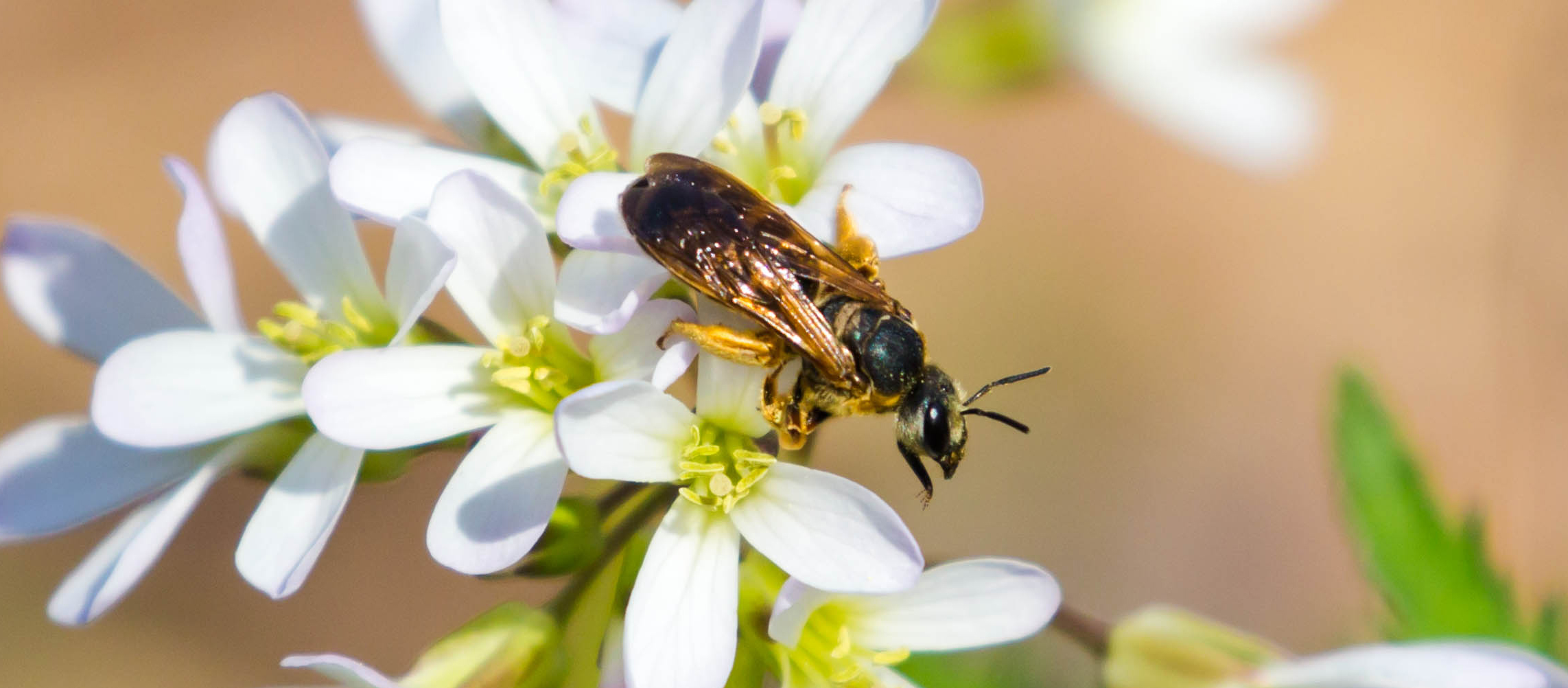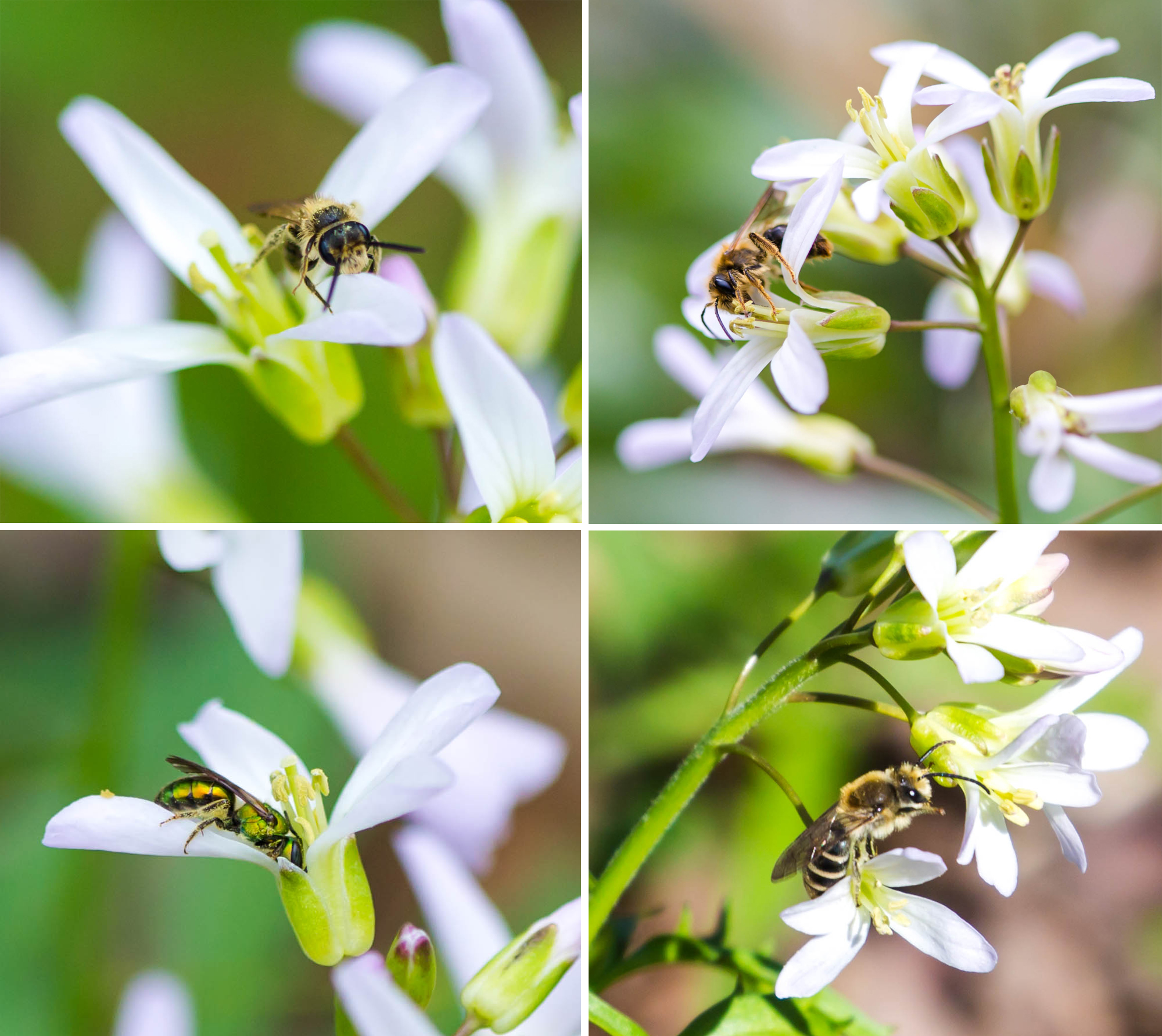#NatureZen: Welcome Back, Bees
words and photos by Melissa McMasters
A huge part of Overton Park Conservancy’s mission is connecting the people of Memphis, so it’s hard to accept that one of the kindest things we can do for each other–particularly for the most vulnerable among us–is to keep some distance. The last thing we want to do, though, is lose the spirit of connection, so over the coming weeks, we’re going to offer some periodic doses of #NatureZen–photos and stories that will help you connect to the natural world during a time of stress. (Pro tip: if you’re feeling anxious, follow that hashtag on social media for a steady drip of beautiful content. We’ll be participating as well: follow @overtonpark on Facebook, Instagram, and Twitter, or sign up to get #NatureZen in your inbox.)
Our #NatureZen contribution for today comes from the native bees that have flooded back into the Old Forest as the spring wildflowers start to bloom. The cutleaf toothwort blanketing the forest floor right now has brought out a host of pollinators, like this parallel-striped sweat bee.

Sweat bees in the Halictus genus have short tongues, perfect for the shallow flowers of cutleaf toothwort. (Yes, you can see the bee’s tongue in this photo!) This is just one of the many species of native bees found in the Old Forest. Here are a few more we’ve spotted enjoying the toothwort this week, including mining bees, green sweat bees, and cellophane bees.

Want more adorable bee content? Atlas Obscura shares how photos of bees aid in enthusiasm for their conservation (and reveals how many species have been described in the United States. Hint: it’s WAY more than what’s pictured here!)



